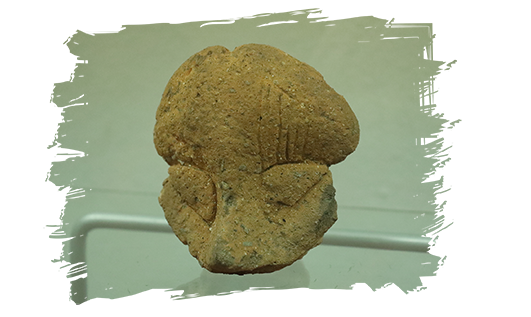OUTside Trepça
Overview
This tour offers a detailed exploration of the mining industry and history of Mitrovica and a chance to discover the landmarks of this city. Starting from the City Museum, you will gain insights into the region’s history and culture, followed by visits to the city center, cultural heritage buildings, and the symbolic bridge that represents Mitrovica’s divided past and present. Then you will visit the Miners Monument, an iconic symbol of the panoramic view of Mitrovica, located in the Miners Hill. Afterward, you will visit the mostly abandoned Trepça Industrial Park, the National Museum of Crystals and Minerals and the Stan Tërg neighborhood. The tour continues to the Museum of Isa Boletini and the Sokolica Monastery, where visitors can enjoy the peaceful surroundings and breathtaking views of the landscape. The tour concludes with a visit to the picturesque Vllahia village and sightseeing of Bajgora Wind Park. Overall, this tour provides you with a comprehensive and attractive experience of Mitrovica’s history, industrial sites, culture, and natural beauty.

Museum of Mitrovica
Museum of Mitrovica was established in 1952. Since 2009 the museum operates in the building of the former Yugoslav Army House in Mitrovica.
The museum holds over 10,000 various exhibits and spanning different historical periods. The museum has the following sectors: Archeology Sector, Ethnology Sector, History Sector, Geology Sector and Fossil Collection, Numismatics Collection, Photo Library, various materials and documents, as well as the Multimedia Hall as an interactive approach for visitors and the community.
Bridge
Mitrovica Bridge or Ibri River Bridge, is a steel truss bridge crossing the Ibri River in Mitrovica.The bridge was refurbished in 2001 with French government money and is often referred to as the “Austerlitz Bridge” due to its resemblance to the French Pont d’Austerlitz. It is an iconic symbol of the divided city, as it separates and unites the main communities, Albanians in the south and Serbs in the north. Today the bridge is a modern landmark of the city, it is open to pedestrians, and the most famous building that is taken in photos.


Miner’s Monument
This monument began construction in 1959 in a location called “Miners’ Hill” and was completed in 1973. The Monument to the Fallen Miners is a structure measuring 19 meters in size, composed of three elements. It has two massive concrete pillars with a brutalist appearance supporting an upper block of stylized concrete with the symbolism of the mining cart. The distance between the pillars is 16 meters, and the height is 18 meters. The motif of mining carts represents the centuries-long history of the Trepça mines.
Industrial Park of Trepça
The Industrial Park of Trepça is a historical and industrial heritage site located in Mitrovica which represents the modernity of the industry of Kosova. It is one of the most important industrial complexes in the Balkans and has played a significant role in the economic development of the region. The Industrial Park of Trepça encompasses a wide range of industrial facilities, including the first factory of batteries, private recycling businesses, ex-phosphate factories, power plants, as well as administrative and residential buildings. The mining industry employed more than twenty thousand (20.000) people and played a key role in the region’s economy. The Industrial Park of Trepça is unique for tourists, showcasing the region’s mining history and impact on the community.


The National Museum of Crystals and Minerals
The National Museum of Crystals and Minerals is located in the city of Mitrovica, in Stan Tërg. The museum features a wide range of exhibits, including minerals, mining equipment, and artifacts, as well as a historical overview of the mining industry in Kosovo. One of the highlights of The National Museum of Crystals and Minerals is the collection and variety of minerals and crystals. These collections include a diverse range of specimens, such as some of the rarest minerals found in the country, as well as some of the largest and most beautiful crystals on display. Visitors can also see a layered map of the Trepça mine and its eleven horizons.
Mine
Trepça mine is a lead and zinc mine located in Stantërg in Kosovo, known for its rich mineral deposits and history of mining dating back to Roman times. It was developed into a major industrial complex during the 20th century. Since the 90s, the production of Trepça mines declined due to the suppression of Kosovo’s autonomy and the expulsion of Albanian workers by the regime of the time. The mine is still working, but with limited capacities. It’s a unique place to be visited, especially to experience the lifting down in the horizons of the mines when you can walk as a miner and have a unique experience.

Stantërg
Stantërg is a small settlement located in the municipality of Mitrovica. Stantërg was primarily built to support the mining operations in the Trepça mines. Stantërg settlement was built in the 1930s with British-style infrastructure. The infrastructure of the settlement gradually developed over time. There has been little investment in the infrastructure since the end of the war (1999) and the closure of the mine, and as a result, many of the buildings and facilities nowadays have fallen into disrepair. The neighborhoods such as “Kolonia” or “ Plloça” should be visited.
What’s Included
- Expert local tour guide narrative
- Transportation
- Visit the North part of Mitrovica
- Entrance in: National Museum of Crystals and Minerals, City Museum of Mitrovica, Isa Boletini Museum and Sokolica Monastery
- Traditional lunch available with vegetarian options
- Souvenirs (postcards & crystals)
Tour extensions
- Purple Tour

